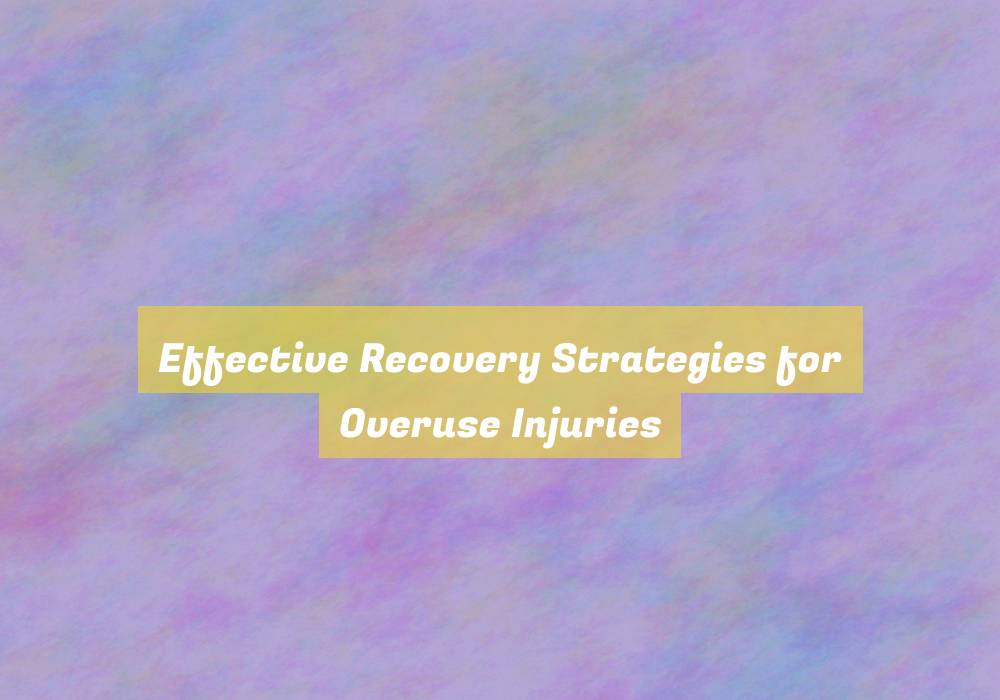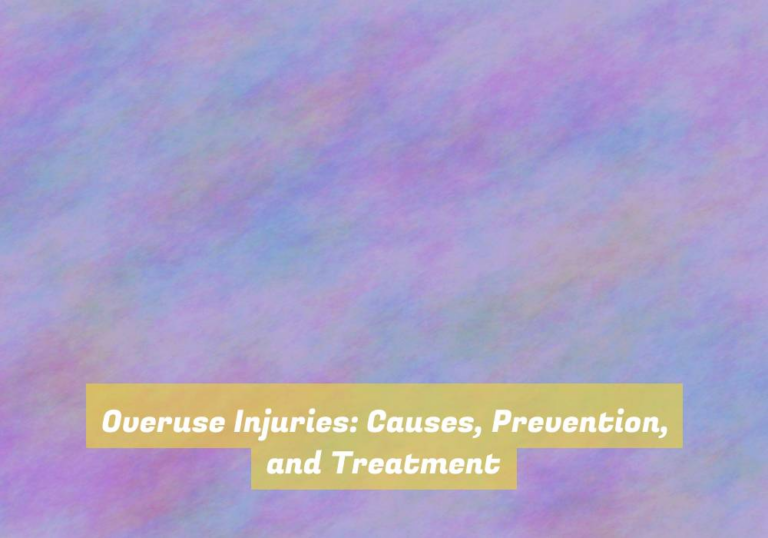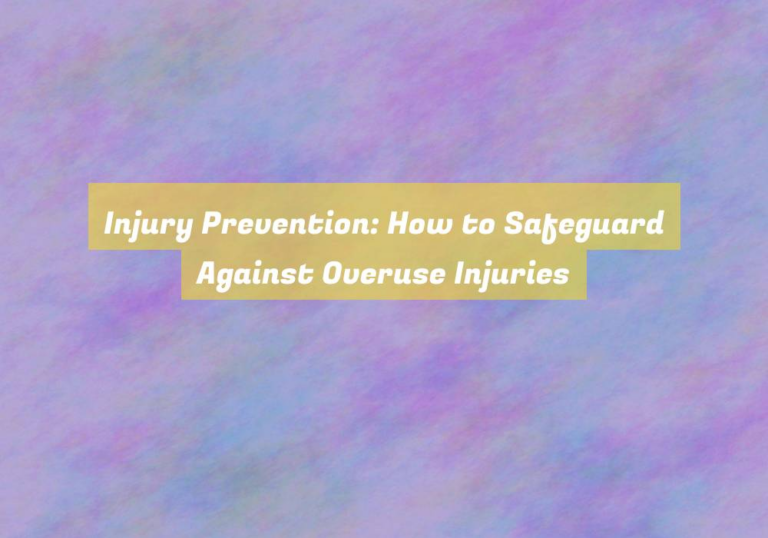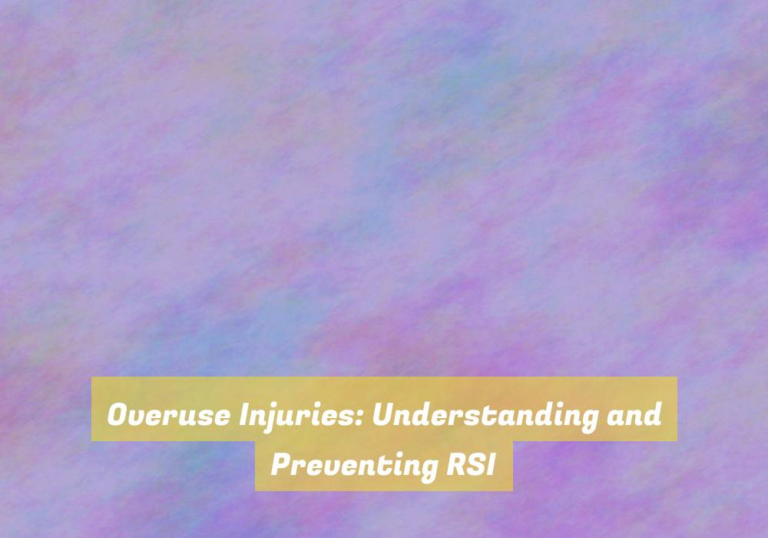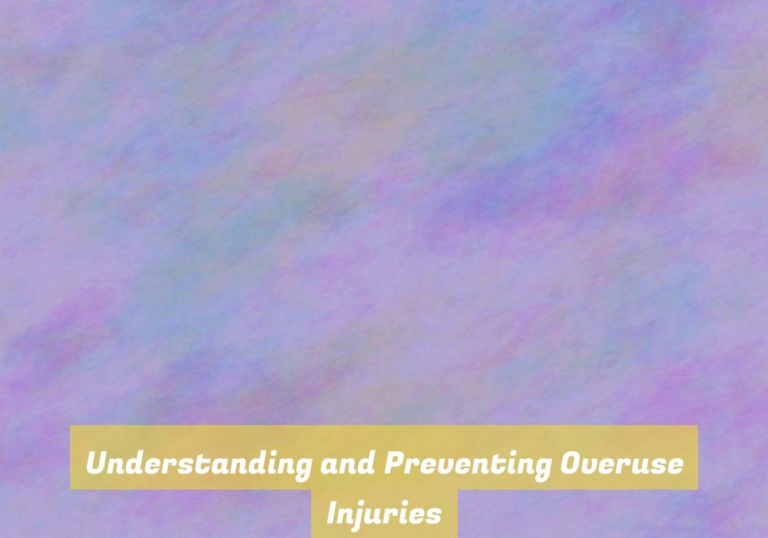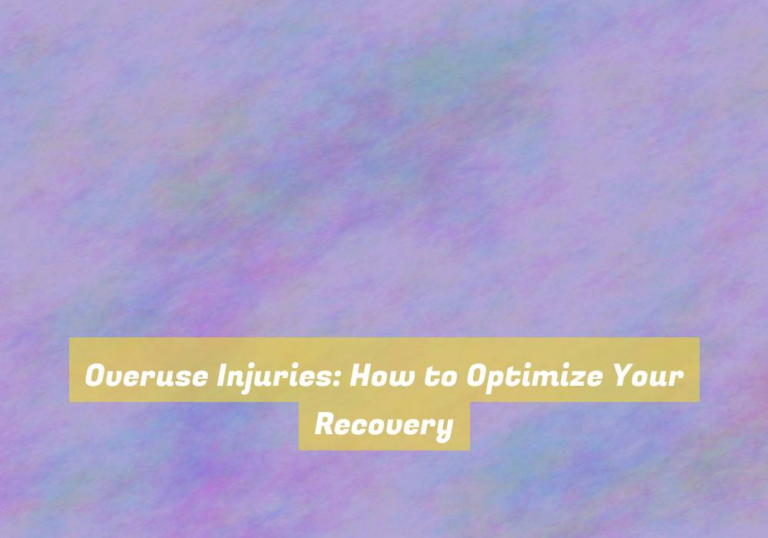Effective Recovery Strategies for Overuse Injuries
YouG??ve been pushing yourself to the limit, and now youG??re paying the price with an overuse injury. But fear not, there are effective recovery strategies that can help you get back on track.
From simple rest and activity modification to comprehensive rehabilitation and physical therapy, the path to recovery is within reach.
But how do you navigate these strategies to ensure a successful recovery and prevent future injuries? LetG??s explore the steps you can take to regain your strength and prevent overuse injuries from derailing your progress.
Understanding Overuse Injuries
Understanding overuse injuries is essential for preventing and managing them effectively. When you engage in repetitive activities, such as running, weightlifting, or playing a musical instrument, without allowing enough time for rest and recovery, you put yourself at risk for overuse injuries.
These injuries occur when the bodyG??s tissues are subjected to repetitive stress without sufficient time to heal. Common examples of overuse injuries include tendinitis, stress fractures, and muscle strains. By understanding the causes and risk factors of overuse injuries, you can take proactive steps to prevent them.
Pay attention to your bodyG??s signals, such as persistent pain, swelling, or decreased performance, as these may indicate an overuse injury. Incorporating rest days into your training schedule, cross-training to vary the types of stress on your body, and maintaining proper form and technique can all help reduce the risk of overuse injuries.
Rest and Activity Modification
When dealing with overuse injuries, itG??s crucial to prioritize rest and modify your activities to allow for proper healing and recovery.
Rest is essential to give your body the time it needs to repair and regenerate damaged tissues. ItG??s important to listen to your body and avoid activities that exacerbate the injury. This may involve reducing the frequency, duration, or intensity of your workouts or modifying your technique to decrease stress on the affected area.
Activity modification is another key aspect of managing overuse injuries. This can include cross-training to reduce repetitive stress on specific muscles or joints, incorporating low-impact exercises, or focusing on strengthening and flexibility exercises to address underlying biomechanical issues.
ItG??s also important to reassess your training or daily activities to identify any potential causes of the overuse injury and make necessary adjustments.
Rehabilitation and Physical Therapy
Engage in targeted rehabilitation exercises and seek guidance from a qualified physical therapist to support your recovery from overuse injuries. Rehabilitation plays a crucial role in not only alleviating pain but also in restoring strength, flexibility, and function to the affected area.
A physical therapist will assess your condition and design a tailored rehabilitation program to address your specific needs and goals. TheyG??ll guide you through exercises aimed at improving muscle imbalances, correcting movement patterns, and promoting tissue healing.
In addition to targeted exercises, physical therapy may also include modalities such as ultrasound, electrical stimulation, or manual therapy techniques to reduce pain and inflammation. These modalities can help enhance the effectiveness of your rehabilitation program and expedite your recovery process.
Furthermore, a qualified physical therapist will provide education on proper body mechanics and techniques to prevent future overuse injuries. TheyG??ll empower you with the knowledge and tools to make long-term changes to reduce the risk of re-injury and improve overall physical health and performance.
Prevention and Long-Term Management
To ensure ongoing prevention and long-term management of overuse injuries, incorporating the knowledge and techniques provided by a qualified physical therapist into your daily activities is essential. Your physical therapist can design personalized exercise programs to address muscle imbalances, improve flexibility, and strengthen specific areas prone to overuse injuries. Consistently following this program can help prevent future injuries and manage existing ones.
In addition to targeted exercises, your physical therapist can provide valuable education on proper body mechanics and movement patterns. By learning how to move efficiently and safely during daily activities and exercise, you can reduce the risk of overuse injuries. Furthermore, your therapist can offer guidance on modifying activities or using supportive equipment to minimize stress on vulnerable areas.
Long-term management of overuse injuries also involves a commitment to ongoing self-care. This includes incorporating adequate rest and recovery time into your workout routine, maintaining good overall physical fitness, and addressing any discomfort or pain promptly. By staying proactive and working closely with your physical therapist, you can effectively prevent overuse injuries and manage any existing conditions for improved long-term wellness.
Conclusion
In conclusion, overuse injuries can be effectively managed with rest, activity modification, rehabilitation, and physical therapy.
ItG??s important to listen to your body and take the necessary steps to prevent re-injury.
By implementing these recovery strategies and making long-term changes, you can get back to your activities with reduced risk of overuse injuries.
Stay proactive and prioritize your health to achieve a successful recovery.

